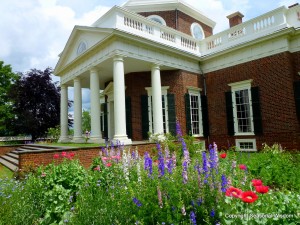
Thomas Jefferson was the third president of the United States, author of the Declaration of Independence and father of the University of Virginia. But in his heart, he was a gardener. “No occupation is so delightful to me as the culture of the earth, and no culture comparable to that of the garden,” wrote Thomas Jefferson in 1811.
Few know this better than Peter Hatch, who for nearly 35 years maintained, interpreted and restored the 2,400 acre landscape at Jefferson’s Monticello. Recently, Seasonal Wisdom met the renowned historian — a month before he retired — to discuss the gardens, his new book and why Jefferson was our nation’s first foodie. Take a peek…
One morning in May, I was fortunate to spend some time at Monticello with Peter Hatch, director of gardens and grounds since 1977. About to retire, Hatch had just published the critically acclaimed book, A Rich Spot of Earth: Thomas Jefferson’s Revolutionary Garden at Monticello.
The 280-page book, with 200 full-color illustrations, is as lovely and interesting as the actual gardens. Food-lovers and gardeners will delight in the juicy historical facts, luscious photos and centuries-old horticultural advice distributed throughout this authoritative book.
The section on fruits, roots and leaves (a catalog of selected Monticello vegetables) is reason enough to buy the book. It provides a rare look into late-eighteenth/early nineteenth century gardening and culinary practices for everything from artichokes to peas. There’s also an appendix with specific historic varieties.
“This vegetable garden was Jefferson’s chief horticultural achievement,” says Hatch. “He documented growing 330 varieties of 99 species of vegetables here, including native seeds discovered on the Lewis and Clark exhibition. This experimental laboratory was the garden of Jefferson’s retirement years.”
Gathering seeds from around the world, Jefferson was instrumental in introducing many vegetables into mainstream society. As Nicholas King, mapmaker for the Lewis and Clark expedition explained, “no person has been more zealous to enrich the United States by the introduction of new and useful vegetables.”
The first section of the book explores how Monticello’s 1,000 foot long vegetable garden was restored in the early-1980s with archaeological research and Jefferson’s own garden journal, featuring 60 years of detailed notes. The above photo — taken after a heavy May rainstorm — shows only a portion of the garden.
The original terraced garden, however, was painstakingly built by seven slaves with a mule and a cart over three years, under the supervision of Edmund Bacon. More than five thousand tons of rock were built as high as 12 feet high, and extended across the garden. This provided ideal southeastern exposure for growing food, as well as breathtaking, 40-mile views to the south and east.
Jefferson was so proud of this kitchen garden, he used the term “garden” exclusively for his vegetable garden, not his flower beds. Vegetable-rich meals (where meat was eaten more as a condiment) were prepared for the president’s family and friends by the finest chefs brought over from France.
“Today, we take many of these foods for granted,” adds Hatch. “But Jefferson introduced many culinary traditions to the young nation, and was one of our first foodies.”
As we sat in the garden pavilion shown above, Hatch described the challenges of finding varieties grown by Jefferson — despite the president’s detailed garden records. As Hatch and his staff restored the gardens in the early-1980s, the project often felt like detective work.
“Vegetables have changed a lot over the years,” admits Hatch. “Another challenge was that Jefferson often named varieties after people who gave him seeds; after places where the seeds originated; or after physical characteristics of the plant. Fortunately, we’ve uncovered several varieties that grew in this garden and were documented in Jefferson’s records. As a result, I believe Jefferson would certainly recognize the garden as it looks today.”
The view from the rebuilt pavilion — also called the garden temple or observatory — is wonderful, as you can see.
As we talked, I couldn’t help but notice Montalto, Jefferson’s “high mountain,” which is part of the Carters Mountain range. Reaching more than 1,200 feet high, the mountain is also called Brown’s Mountain today.
Lettuces, beans and other vegetables are planted in tidy garden rows. As Hatch’s book explains, more than 20 different lettuce types grew at Monticello, including Tennis Ball, Brown Dutch and Ice. Some were eaten fresh, others were steamed like spinach. Lettuces were harvested every month of the year, and often sowed on Monday.
“… a thimbleful of Lettuce should be sowed every Monday morning, from Feb. 1st to Sept. 1,” Jefferson wrote in his General Gardening Calendar.
Beans were also popular for the former president. He planted all types, including lima beans, kidney beans and snap beans. Scarlet runner beans (still commonly grown today) were cherished for “the beauty of their flowers and for the flavorful nourishment of the immature beans,” writes Hatch in A Rich Spot of Earth.
About 35 varieties of cabbage grew at Monticello, including Choux de Milan and Early York. In his book, Hatch describes a cabbage recipe from Jefferson that featured “lean beef, egg yolks, suet, onions and bread crumbs.” Red and green cabbages were also pickled or preserved into a Virginia-style sauerkraut.
Artichokes were a “trophy plant” enjoyed by Jefferson and his fellow gentlemen farmers of the day. In fact, at Mount Vernon a few days later, I learned artichokes were one of George Washington‘s favorite vegetables.
At Monticello, the perennial vegetable had its own garden square. Artichokes were protected from winter’s cold with “pea haulm, tan bark, long [rotted] dung or straw,” according to Hatch.
English peas were easily Jefferson’s favorite vegetable, and a great deal of garden space was devoted to growing this cool-season food at Monticello.
Jefferson delighted in participating in spring pea-growing contests with neighbors, and his pea plants were staked using peach tree clippings pruned from the garden.
Farm-to-table meals were a way of life at Monticello, and the food was as fresh as possible.
Fish from neighboring streams, for instance, were kept alive in this shallow pond near the Monticello house. The freshly caught fish stayed in the pond until they were ready to be enjoyed at the dinner table.
Be sure to take time to visit the flower gardens at Monticello, as well as the impressive fruit orchards.
Back at the classic garden pavilion, Hatch explained to me how the Monticello gardens were created and why Jefferson should be saluted for his horticultural achievements.
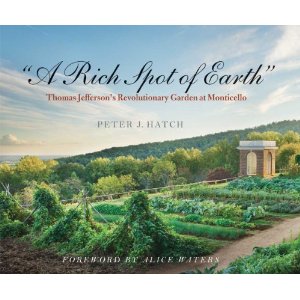 Read All About It – A Rich Spot of Earth is the first book devoted to all aspects of Jefferson’s vegetable gardens. This lovely book is one I will read and reread for many years. It’s a fascinating way to learn more about this founding father’s amazing horticultural experiments at Monticello. Highly recommended.
Read All About It – A Rich Spot of Earth is the first book devoted to all aspects of Jefferson’s vegetable gardens. This lovely book is one I will read and reread for many years. It’s a fascinating way to learn more about this founding father’s amazing horticultural experiments at Monticello. Highly recommended.
Disclosure: Seasonal Wisdom was not sent a review copy. I purchased this book at Monticello, and then immediately asked for an autograph from the author. He kindly obliged.
Incidentally, Jefferson’s journal served as a valuable resource during Monticello’s renovation project, as mentioned. Above is a special edition of The Garden and Farm Books — published by Fulcrum in 1987 — which I bought at my library book store for two dollars a few years ago. If you aren’t that lucky, consider buying a copy online.
Don’t Miss -Celebrate Jefferson’s wonderful legacy by attending the sixth annual Heritage Harvest Festival at Monticello on Sept. 14-15.
Along with seed swaps and heirloom food tastings, you’ll find interesting presentations by folks like Joel Salatin of Polyface Farm and Joe Lamp’l of PBS-TV’s Growing A Greener World. Believe me, if I could … I’d be there too.
Meanwhile, how many of you have already visited Monticello? What impressed you the most about the gardens? Why do you think it’s important to keep this gardening and culinary heritage alive in the United States?
More Reading:
Great Garden Advice from Thomas Jefferson
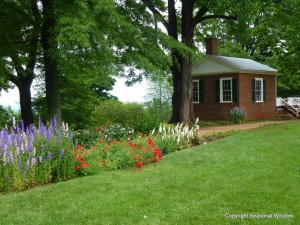

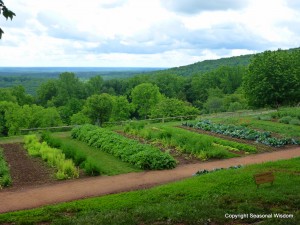

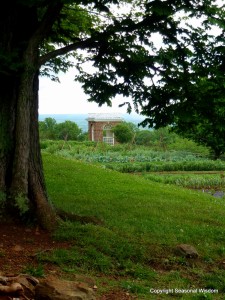
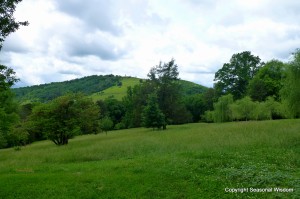
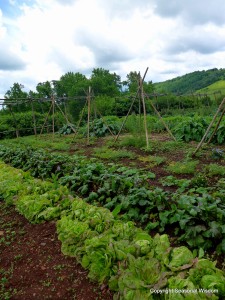
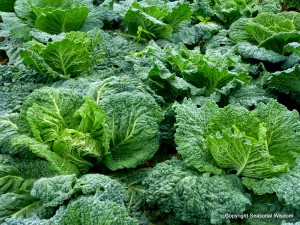

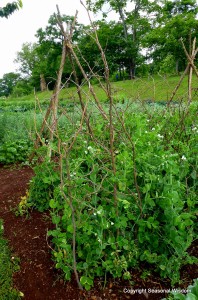
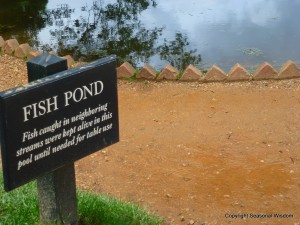
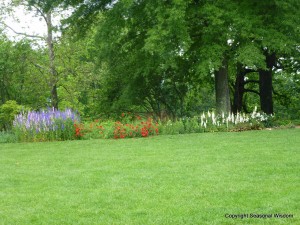
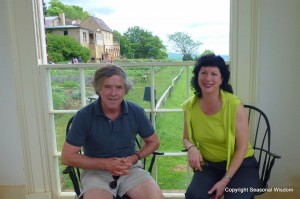
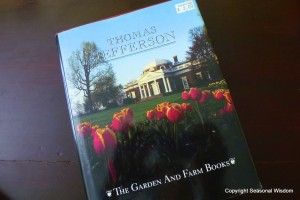
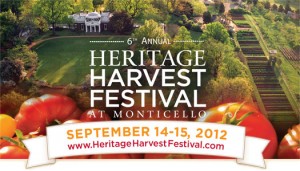
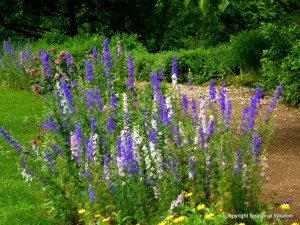











{ 6 comments }
Loved your summary of the interview with Peter Hatch. Thanks for sharing!
Thanks a lot, Tom. Your comments are very appreciated. It’s a wonderful garden and definitely worth a visit. Teresa
Looks lovely but the photos are so small – is difficult to enjoy them fully.
Thanks for your message. Simply click on any photo (except the top image) and it will open up larger. Best, Teresa
I visited there with my younger daughter when she was at American Uni. It is a marvelous place. Much more “simple” than I thought, meaning not highly structured. It was extremely organized yet absolutely beautiful.
Hi Gail: I agree! Monticello is a wonderful place that has a timeless beauty. Thanks for visiting Seasonal Wisdom, and hope to see you again. Teresa
Comments on this entry are closed.
{ 9 trackbacks }